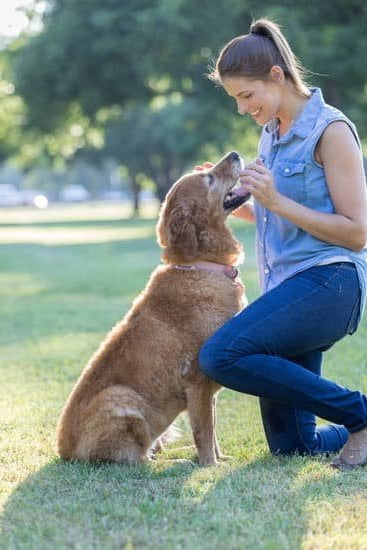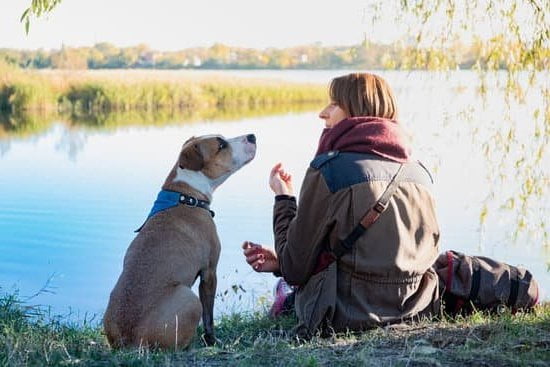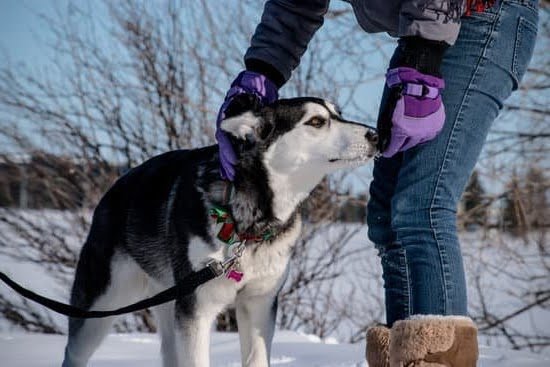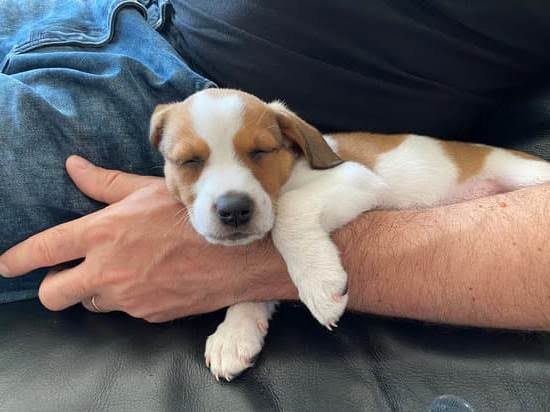Training a new dog on an invisible fence system can be a challenging but rewarding experience for both you and your furry companion. An invisible fence is a modern solution to keep your dog safe within boundaries without the need for physical barriers. In this article, we will explore the process of training your new dog on an invisible fence to ensure their safety and freedom in your home.
Understanding the concept of how an invisible fence works is crucial before starting the training process. Invisible fences use a combination of underground wires and a receiver collar worn by the dog to create a safe containment area. When the dog approaches the boundary, they receive a mild static correction through the collar, which serves as a gentle reminder to stay within their designated space.
By using an invisible fence system, you not only provide your new dog with freedom to roam and play safely in your yard but also protect them from potential dangers outside your property. This innovative technology allows for a more flexible approach to setting boundaries compared to traditional physical fences, making it an appealing option for many pet owners.
Benefits of Using an Invisible Fence for Your New Dog
The benefits of using an invisible fence for your new dog are plentiful and can greatly improve the safety and security of your pet. An invisible fence works by utilizing a boundary wire that emits a signal to a receiver collar worn by the dog.
When the dog approaches the predetermined boundary, it receives a warning tone followed by a static correction if it continues to move closer. This system allows for freedom of movement within a designated area while also keeping your dog safe from wandering off into potential danger.
One significant benefit of using an invisible fence is the peace of mind it provides to pet owners. With traditional fences, there may be concerns about the aesthetic appeal or height limitations, but an invisible fence offers a discreet solution that does not obstruct views or alter the landscape of your yard. Additionally, invisible fences are usually more cost-effective than physical fences, making them an attractive option for those looking to contain their dogs without breaking the bank.
Furthermore, invisible fences can be easily customized to fit the specific needs of your new dog. Whether you have a small breed that requires a smaller containment area or a larger breed with more room to roam, invisible fences offer flexibility in setting boundaries that cater to your pet’s size and behavior.
By following proper training techniques and guidelines, you can ensure that your new dog understands and respects these boundaries, giving them the freedom they need while keeping them safe within their designated area.
| Benefits | Details |
|---|---|
| Peace of Mind | An invisible fence provides pet owners with peace of mind knowing that their dog is safe within set boundaries. |
| Cost-Effective | Invisible fences are generally more affordable than traditional physical fences. |
| Customization | Allows for customization based on the size and behavior of your new dog. |
Preparing Your Home and Yard for Invisible Fence Training
When it comes to training your new dog on an invisible fence, one of the most crucial steps is preparing your home and yard for the training process. Here are some key steps to take in order to ensure a successful invisible fence training experience for your furry friend:
- Remove any potential obstacles: Before beginning the training, make sure to clear out any debris, toys, or other objects that could interfere with the invisible fence signal. This will help prevent any confusion for your dog during training sessions.
- Secure entry and exit points: It’s important to secure gates, doors, and other entry points in your yard to prevent your new dog from accidentally leaving the designated boundaries. Double-check all barriers to ensure they are secure and functioning properly before starting the training.
- Set up flags or markers: Using visual aids like flags or markers can help your new dog visualize where the boundaries of the invisible fence are located. By placing these markers along the perimeter of the desired boundary, you can provide a clear visual reference for your dog during training sessions.
By taking these preparatory steps before starting invisible fence training with your new dog, you can set both you and your furry companion up for success. Remember that consistency and positive reinforcement are key when introducing this new concept to your pet. With patience and dedication, you’ll be on your way to safely containing your dog within the designated area using an invisible fence system.
Choosing the Right Invisible Fence System for Your Dog
When it comes to training a new dog on an invisible fence, selecting the right invisible fence system is crucial to ensuring the effectiveness of the training process. With various options available on the market, it’s essential to choose a system that suits your dog’s needs and behavior. Here are some factors to consider when choosing the right invisible fence system for your furry friend:
- Size of Your Property: Before deciding on a specific invisible fence system, take into account the size and layout of your property. Some systems may have limitations in terms of coverage area, so make sure to choose one that can accommodate your entire yard.
- Training Features: Look for an invisible fence system that offers customizable training settings based on your dog’s temperament and behavior. Some systems come with adjustable levels of correction, tone-only options, and warning zones to help with training.
- Battery Life and Reliability: Choose an invisible fence system with a long-lasting battery life to avoid frequent replacements. Additionally, opt for a reliable system with consistent signal transmission to ensure that your dog stays safely within the boundaries.
Once you have considered these factors and selected the appropriate invisible fence system for your new dog, you can proceed with introducing them to the boundaries and beginning the training process. By investing in a high-quality invisible fence system that meets your dog’s needs, you can set them up for success in learning how to navigate their new environment safely.
- Consider Size of Your Property
- Evaluate Training Features
- Check Battery Life and Reliability
Introducing Your New Dog to the Invisible Fence Boundaries
When it comes to training your new dog on an invisible fence system, the first step is to introduce them to the invisible boundaries. This may seem like a daunting task, but with patience and consistency, your pup will soon understand their boundaries and stay safe within them.
Start by walking your dog around the perimeter of the invisible fence while on a leash. Allow them to explore and sniff around while keeping a close eye on their reactions. It’s important to have treats handy to reward them for staying within the boundaries. Repeat this process several times until your dog becomes familiar with the area.
Once your dog has shown some understanding of the boundaries, it’s time to let them off the leash within the designated area. Keep a watchful eye on their behavior and be ready to redirect them back within the boundaries if they start to stray. Practice this exercise daily until your dog consistently stays within the invisible fence limits.
As you continue training your new dog on the invisible fence, remember to always use positive reinforcement and rewards for good behavior. Consistency is key in ensuring that your furry friend understands and respects their new boundaries, ultimately keeping them safe and secure in your yard.
Initial Training Sessions With Your New Dog on the Invisible Fence
Training a new dog on an invisible fence requires patience, consistency, and positive reinforcement. Once you have introduced your pup to the boundaries of the invisible fence and they understand the concept, it is time to start the initial training sessions. During these sessions, you will teach your dog to recognize warning signals, such as beeps or vibrations, and learn to retreat when they hear them.
Start by placing flags along the perimeter of the invisible fence to serve as visual markers for your dog. Then, put a leash on your pup and walk them around the boundaries while monitoring their reactions to the warning signals.
If your dog approaches too close to the boundary and triggers a warning signal, gently guide them back into the safe zone while praising them for complying. Repeat this process several times during each training session to reinforce the desired behavior.
It is crucial to keep training sessions short and positive to prevent your dog from feeling overwhelmed or stressed. Make sure to end each session on a high note with rewards and praise for good behavior. Consistency is key when training a new dog on an invisible fence, so be diligent in reinforcing boundaries and rules. With time and practice, your dog will learn how to navigate safely within their designated area without constant supervision.
| Key Point | Details |
|---|---|
| Use visual markers | Place flags along the perimeter of the invisible fence for guidance |
| Short and positive sessions | Avoid overwhelming your dog by keeping training sessions brief and rewarding good behavior |
| Consistency is key | Reinforce boundaries consistently through praise and rewards for compliance |
Troubleshooting Common Issues During Invisible Fence Training
Interference From Other Electronic Devices
One common issue that may arise during invisible fence training for your new dog is interference from other electronic devices. This interference can disrupt the signal of the invisible fence, causing confusion for your dog. To troubleshoot this issue, make sure that the transmitter for the invisible fence is placed away from other electronic devices such as Wi-Fi routers or garage door openers. Additionally, consider using a brand of invisible fence system that offers frequency settings to minimize interference.
Adjusting Signal Strength
Another potential issue during invisible fence training is the need to adjust the signal strength to ensure it is appropriate for your new dog’s size and breed. If your dog is not responding well to the invisible fence boundaries, it may be necessary to increase the signal strength slightly.
On the other hand, if your dog seems fearful or hesitant around the boundaries, lowering the signal strength can help alleviate their anxiety. Always follow the manufacturer’s guidelines when making adjustments to ensure your dog’s safety.
Reinforcing Training Consistency
Consistency is key when training your new dog on an invisible fence. One common issue that may arise is inconsistent training behaviors from family members or caretakers. To troubleshoot this issue, make sure everyone involved in your dog’s care understands and follows the same training protocols.
Ensure that all family members are consistent in reinforcing boundaries and rewarding positive behavior when it comes to respecting the invisible fence limits. By maintaining consistency in training methods, you can help your new dog understand and respect their boundaries effectively.
Tips for Ensuring the Effectiveness of Invisible Fence Training
Consistent Training Schedule
When it comes to training your new dog on an invisible fence, consistency is key. Establishing a consistent training schedule will help your dog understand the boundaries and avoid confusion. Make sure to set aside time each day for training sessions, keeping them short but frequent for better results. Consistency in your approach will reinforce the invisible fence system’s boundaries and expectations for your pet.
Positive Reinforcement Techniques
Using positive reinforcement techniques can greatly enhance the effectiveness of training your new dog on an invisible fence. Reward your dog with treats, praise, or playtime when they stay within the designated boundaries. Positive reinforcement creates a positive association with following the rules of the invisible fence, making it more likely that your dog will comply in the long run. Avoid using punishment or fear-based methods as they can be counterproductive and harm your relationship with your pet.
Regular Supervision and Monitoring
Even after your new dog has become familiar with the invisible fence system, it is important to continue supervising and monitoring their behavior. Regularly check that the boundary flags are in place and functioning properly.
Keep an eye on your dog’s reactions and behavior around the boundaries to ensure they are not exhibiting any signs of confusion or distress. By maintaining regular supervision and monitoring, you can address any issues promptly and prevent potential problems from arising while keeping your pet safe within their designated area.
Long-Term Maintenance and Monitoring of Your New Dog’s Behavior With the Invisible Fence
In conclusion, training a new dog on an invisible fence requires patience, consistency, and proper planning. Understanding the concept of invisible fence systems and the benefits they provide is essential before starting the training process. By preparing your home and yard accordingly and selecting the right invisible fence system for your dog’s needs, you can set the stage for successful training.
Introducing your new dog to the boundaries of the invisible fence gradually and conducting initial training sessions with positive reinforcement are key steps in ensuring your pet understands how to navigate within the designated area. It is important to be attentive during these training sessions and address any issues that may arise promptly.
By troubleshooting common problems effectively and implementing tips for maintaining the effectiveness of the invisible fence training, you can help your dog adapt to their new boundaries smoothly.
Additionally, long-term maintenance and monitoring of your new dog’s behavior with the invisible fence are crucial for their safety and well-being. Regularly checking the system, addressing any signs of discomfort or confusion in your pet, and adjusting training methods as needed will help reinforce their understanding of the boundaries. With dedication and consistent effort, you can successfully train your new dog on an invisible fence system while promoting their freedom and security in a controlled environment.

Welcome to the blog! I am a professional dog trainer and have been working with dogs for many years. In this blog, I will be discussing various topics related to dog training, including tips, tricks, and advice. I hope you find this information helpful and informative. Thanks for reading!





